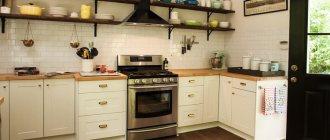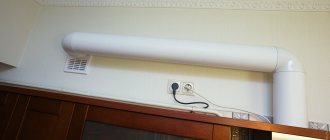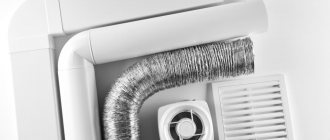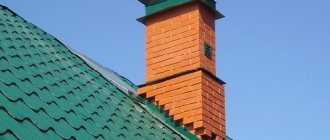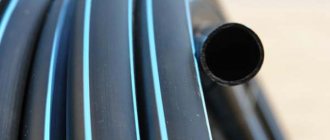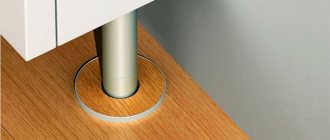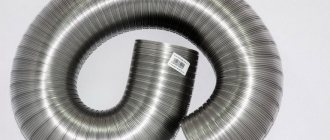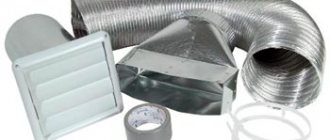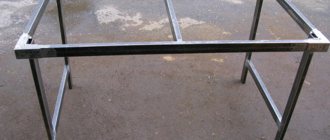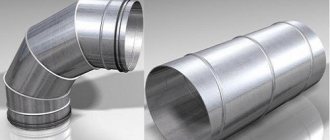Everything influences the overall impression of the interior. Including technical details, which many pay little attention to, especially if this is the first renovation and it is carried out without a designer. A corrugated or plastic pipe from a kitchen hood is such a detail. Of course, it is possible to leave it in sight, but it is not aesthetically pleasing. We suggest camouflage options.
Please note: connecting the hood to the general house ventilation is not always possible. We described in detail in what cases this can be done in the article.
Why hide pipes?
There are two types of kitchen hoods.
Circulating hoods that purify the air using a filter and return it back to the room. They do not require connection to the ventilation shaft of the building; therefore, they do not require an air duct and do not need to mask anything.
Flow hoods that remove polluted air from the kitchen. They clean much more effectively, but require connection to the ventilation system through a corrugated hose, which has an unattractive appearance that does not decorate the interior of the kitchen. In addition, if the ventilation shaft is located on the other side of the kitchen, the length of the air duct can be several meters. Therefore, the question of hiding the exhaust pipe arises simultaneously with the process of installing the entire system.
Is it necessary to hide the hood
Typically, the need to hide the hood arises if a flow-through model has been chosen, which must be connected to the ventilation ducts. This is a more efficient system than a circulation system. The latter performs its functions due to the presence of volumetric filters - carbon and those that retain fat. The circulation hood does not have an air duct, so there is no need to hide it.
Flow systems also do not always need to be hidden. If the kitchen is designed in a loft style, then a metal corrugated pipe can complement the interior, becoming a certain highlight. It can be painted black or left in its original form. Open communications are encouraged in the loft style.
Methods for masking pipes
Instead of corrugation, you can use a plastic pipe of round or rectangular cross-section, suitable in size for the diameter of the channel. To connect short sections, adapters of various configurations are used. The disadvantage of a plastic pipeline is the loss of traction when it is long. Therefore, it is recommended to use such a plastic box only if there is a ventilation hole next to the hood.
You can decorate a corrugated sleeve in the following ways.
- A box made of plasterboard. It is built on a frame made of metal profiles and then painted in a color that matches the design of the kitchen.
- Built-in furniture. The air duct is inconspicuously placed in the walls of a high wall cabinet suspended above the stove. This option is suitable in the case of a built-in hood mounted at the bottom of such a cabinet.
Both options can be combined with lighting made from LED elements, which will add comfort and brightness to the lighting in the kitchen.
- Cornice of a kitchen set. The exhaust pipe is passed close to the wall along the top of the kitchen furniture, and it becomes closed behind the cornice.
- Suspended or stretch ceiling. In this case, the corrugated pipe will be completely hidden. The ceiling height will lose from 13 to 15 cm.
- Decorative elements or painting of corrugation, which will act as an element of the kitchen interior.
If your kitchen is decorated in a high-tech style, the aluminum corrugation can be left as is, without masking. It goes well with this style.
Which way is better
The most rational camouflage option will be the one that best suits the interior of your kitchen.
The simplest way is to replace the corrugation with a plastic air duct. But we must take into account that it is effective only when the hood is located close to the ventilation hole. In addition, the plastic box must fit into the color design of the kitchen. Otherwise, it will have to be painted or covered with suitable wallpaper.
If the sleeve is long and extends across the entire room, then the best option would be a suspended ceiling that allows you to completely hide the exhaust pipe.
The cheapest option would be to paint the corrugation and decorate it with simple decorative elements.
Installation considerations
Do not bend the pipe more than 90 degrees
To ensure installation work is carried out correctly, follow these tips:
- the diameter of the pipe itself must match the diameter of the ventilation hole or be larger;
- the total length of the pipe should not exceed 3 m;
- do not bend the pipe more than 90º;
- To protect against backdraft, special valves are used - plastic or film.
Backdraft protection
Requirements for materials for sealing pipes
Materials for masking pipes can be metal, plastic, wood and drywall.
Structures that hide air ducts and other communications serve not only for decorative purposes, but also reduce the noise of the hood electric motor. They must look aesthetically pleasing, be highly resistant to elevated temperatures and moisture, chemical influences, ultraviolet radiation, and be easy to maintain and clean from dust and other contaminants.
Plastic is quick and easy to assemble, easy to process, and light in weight. Its disadvantages are tarnishing over time and susceptibility to mechanical stress.
Stainless steel boxes have a special design, are reliable in strength, and do not change their appearance. The disadvantages include the heavy weight of the structure, bulkiness and high price.
Drywall has gained great popularity as a finishing material. It is affordable and easy to install, which allows you to assemble structures from it yourself, without the involvement of craftsmen. A gypsum plasterboard box can be painted, puttied, finished with wallpaper, tiles, and mosaics. During installation, the fragility of the material must be taken into account.
Wood, if well processed, will harmoniously combine with the facade of a wooden kitchen set, reliably performing protective functions.
Caring for a corrugated air duct and the need to replace it
Corrugated pipe is a fairly inexpensive option for air duct from the kitchen hood to the ventilation duct. If everything is done correctly, its operation will be long and problem-free. However, dust and grease accumulate on the corrugation over time. It is necessary to periodically wipe the pipe with a soft cloth and soapy water. Particular attention should be paid to the places between the folds.
Although the service life of a corrugated pipe is up to 10 years, fat, fumes and soot accumulate inside it, interfering with the normal flow of air. These contaminants are practically impossible to remove. The best option would be to buy and install a new corrugation, especially since it will not cost much. After dismantling the old pipe, the new one is installed exactly as described in the step-by-step instructions.
Do-it-yourself pipe masking
You can install decorative boxes yourself, even without having great home craftsmanship skills. Here it is important to decide in advance on the pipe finishing option, select the right material and fasteners.
Required tools and materials
The following set of tools will be needed:
- electric drill;
- screwdriver;
- perforator;
- scissors for working with metal;
- for working with wood and drywall - a jigsaw;
- ruler;
- level.
For fastening you should purchase:
- dowels of the required size;
- self-tapping screws;
- metal profiles;
- mounting screws;
- clamps for fastening the air duct.
Before purchasing materials, you should determine the dimensions of the structure and calculate the volume of purchase.
Work progress
To hide the corrugation, a decorative box of plasterboard is most often constructed.
- Work begins with measuring the space and air duct, and sketching out the installation project.
- Using a ruler and level, mark with a pencil on the wall. Along the wall, and then along the ceiling, guide profiles are attached with dowels, then vertical sections are attached to them with self-tapping screws.
- The corrugated sleeve is fixed in the openings of the hood and ventilation shaft, placing it inside the frame.
- The frame is covered with plasterboard along the profiles using self-tapping screws.
- The manufactured box can be finished in accordance with the interior of the kitchen: painted, wallpapered, or used other materials.
Classification and scope of application
Corrugated pipe is present on the construction market in various modifications. These can be small-diameter models of various colors, made of plastic. You can also find a stainless steel water-permeable corrugation, which is considered to be the most reliable in use. Each buyer can select products based on the following parameters:
- material;
- price;
- size;
- color.
It is difficult for an inexperienced home handyman to immediately select an option that will solve emerging problems. A corrugated pipe is a very useful element for forming an exhaust ventilation duct. It makes installation work faster and easier.
It is necessary to understand the purpose of this product and the main types that exist on the market in order to choose the appropriate option. If you rush, you may purchase the wrong version of the pipe that will fit harmoniously into the interior.
Reasons for demand
Corrugation is very popular and in demand, as it has many functional characteristics . It is actively used by builders because it:
- has good strength;
- involves a large selection of materials and sizes;
- serves for a long time, maintaining all its characteristics.
The main ones are round and rectangular shapes. The first option is advisable to use for a kitchen hood. As for materials, you can most often find products made from the following materials:
- of stainless steel;
- aluminum;
- galvanized steel;
- on a textile basis;
- made of polyvinyl chloride;
- from low and high pressure polyethylene.
The scope of use of the object is directly determined by the diameter and type of material.
Types of materials
To install household ventilation, it is advisable to use products made of stainless steel or aluminum. It should also be noted that corrugated pipes are divided into spiral-wound and frame, in accordance with the method of their manufacture. The second type - aluminum corrugation for hood - in its appearance resembles a metal frame with foil or a polymer-based film on the surface. Such objects are classified as flexible air ducts. They have the ability to return to their original shape without being deformed, even when the corrugation has been extended to its full length.
Frame products are made from iron strips. They are only 50% flexible and can stretch 2 times. However, after this it is impossible to return them to their original appearance. To ensure the required shape, you need to make every effort, and it will not be possible to do without defects.
Many companies today offer to buy flexible corrugated pipes with and without thermal insulation. In the first case, it is possible to increase the scope of application of products. Four-layer flexible pipes are used for laying ventilation ducts indoors and outdoors. Besides, distance doesn’t really matter here.
Expert advice
Let's look at some of the nuances of masking the exhaust pipe.
When choosing a plastic air duct, it is important to ensure that its diameter is no less than the diameter of the ventilation shaft opening.
A plastic sleeve over 3 meters long is not the best solution.
Additional LED lighting will really transform the kitchen space. It will help make the projection of the box invisible, or, conversely, highlight it in the kitchen facade.
If the ventilation shaft opening is located away from the hood, the sleeve can be rotated and laid through the side wall of the next wall cabinet.
How to mask heating risers
Heating risers are masked in several ways.
Seal the pipes into the wall or floor. The method is labor-intensive, but its main drawback is that if the pipe is damaged or leaks, the wall or floor will have to be dismantled.
The pipes are hidden with a decorative plasterboard box. Mark the place for attaching the metal frame, taking into account that there must be at least 3 cm of space between the pipe and the box. The frame is secured with horizontal jumpers. Then it is sheathed with gypsum board sheets. The joints are covered with sickle tape, putty, and rubbed. Next, the box is decorated with decorative materials or painted to match the color of the room.
In a similar way, you can disguise sewer pipes, water pipes, and, subject to safety precautions, gas pipelines.
It is better to camouflage such communications during the period of their installation, which will allow the boxes to be installed as discreetly as possible.
What is better: plasterboard box or suspended ceiling?
The ceiling will completely hide the sleeve, it will not be visible. But if you have a ceiling below 2.60 in the kitchen, then the option of placing the air duct above the suspended ceiling is excluded.
The plasterboard box will only disguise the exhaust pipe, leaving a protrusion. But if the device fits into the interior, that will be enough.
A suspended ceiling made of panels or ceiling tiles can be easily disassembled if necessary. Sometimes it is necessary to dismantle only the part of the structure located under the air duct.
How to install corrugation on a hood
Corrugated air ducts are soft, weightless aluminum products. Easy to install, bend well at any angle.
During installation, it is better to stretch the corrugation so that subsequently dirt does not accumulate in its ribbed surface.
The diameter of the sleeve should either match or slightly exceed the size of the outlet of the hood. A plastic cylinder with a check valve is installed in this hole.
The end of the corrugation is put on this cylinder and secured with a clamp. The other end of the corrugation is connected in the same way to the ventilation hole through a special air duct. Turn on the hood and apply a sheet of paper to it. If the paper holds, then there is traction.
Features of installation of a plastic ventilation duct
Installation of a plastic air duct for exhaust is carried out in several stages, including the design part and the installation itself.
Scheme development. In order to correctly calculate the required number of air vent elements, it is necessary to draw up a diagram for installing the ventilation duct. The variety of plastic design elements allows you to create almost any variation of the box. In order for the hood to operate normally, the following conditions must be met:
- reduce the length of the box as much as possible, since when lengthened, the intensity of the air flow is lost;
- use a minimum number of installation elements that help change the trajectory of the air flow (constrictions, bends, etc.), as they increase resistance;
Layout diagram of a plastic ventilation duct with dimensions
- Avoid turning the structure by 90°. Such areas maximize resistance and promote the adhesion of pollution particles in these areas;
- remove the box from the heating riser. If this is not possible, then it must be thermally insulated so that the temperature of the device does not exceed 50 °C. The insulating material will help suppress noise;
- According to the developed diagram, the exhaust duct is assembled.
Installation of check valve and grille. The valve is a mandatory element of the ventilation duct. In its absence, the air will simply return to the room. It is installed at the end of the air vent. It is supplemented with a grille and equipped with a mesh so that small animals, birds and insects do not enter the ventilation system from the street or from a common shaft.
Placement and fastening of the air vent. The method of its fastening directly depends on the placement of the box. If the product is mounted in a cabinet, it should be attached to the back wall using clamps. The box laid above the cabinets can be secured to them using holders and self-tapping screws. Fixation to the wall or ceiling should be done using holders and clamps and placed at intervals of at least 70 mm.
Tightness control. When assembling a plastic ventilation duct, it is necessary to ensure that all joints are aligned and that there are no gaps or gaps. It is impossible to check the box for leaks before use, so mistakes made can result in the penetration of polluted air into the room and increased noise.
During installation, it is necessary to accurately adjust all joints so that the structure becomes absolutely airtight
Special elements used when installing hood ducts in the kitchen
Kitchens in private houses and apartments have different layouts, which sometimes seriously complicate the installation of the ventilation system. In such situations, you cannot do without special elements. Traditionally, ventilation ducts are straight parts of a round or rectangular (square) shape. The length of these products is 35, 50, 100, 150 and 200 mm. If necessary, using a hacksaw, you can saw off a piece of the desired size. When there is a need for a length of more than 200 mm, an element from several standard products is mounted using a plastic connector. The connector is positioned so that it does not increase the overall length.
Quite often during installation it is necessary to rotate the air vent. This usually occurs in cases where you have to go around protrusions. For these purposes, so-called knees are used. The rotation angle can be 45 and 90°. The direction is changed horizontally and vertically. For situations where the angle of rotation is not a multiple of 45°, multi-angle elbows are used. The required degree of rotation is achieved by cutting one side of the connector.
If it is necessary to make a ventilation duct with a rotation, then special elbows are used for this
If it is necessary to change the shape of the box from rectangular (square) to round (and vice versa), adapters for the hood are used. A frequently occurring problem that can be solved by using adapters is that a rectangular box must be attached to the round opening of the hood. These elements are available in both straight and angular shapes. Standard indicators – from a diameter of 100 mm to a size of 110x55 mm; from a diameter of 100 mm to a size of 120x60 mm; from a diameter of 125 mm to a size of 204x60 mm.
All of the above elements are used exclusively for plastic products. The technology for installing metal hood boxes is completely different. Connections are made by welding or gluing using a special compound.
Common mistakes
The most common mistakes are made when installing corrugated or plastic air ducts. Thus, to install a plastic or corrugated pipe, it is important that its cross-section matches or exceeds in size the area of the air purifier outlet pipe. When purchasing hoses and exhaust equipment, you should pay attention to this.
The corrugated pipe must be installed as stretched as possible, which is not always observed. Its bends should not be less than the diameter of the corrugation itself.
When laying a plastic pipeline, the bend angles must be obtuse.
Corrugation
This type of pipe is the easiest to install. To do this, one end is fixed to the hood, and the other to the ventilation duct. Special round clamps are used as fasteners, which are tightened with bolts.
The diameter of the pipe may be larger than the diameter of the hood, so the clamp is pressed tightly against the adapter. You can find an alternative - galvanized pipes. They do not rust and completely remove kitchen odors. There are different duct systems: flanged, welded and wafer.
Note!
The pipe exit from the corrugation has a square cross-section, and the adapter should be round. When making purchases, pay attention to the need to purchase the appropriate adapter.

